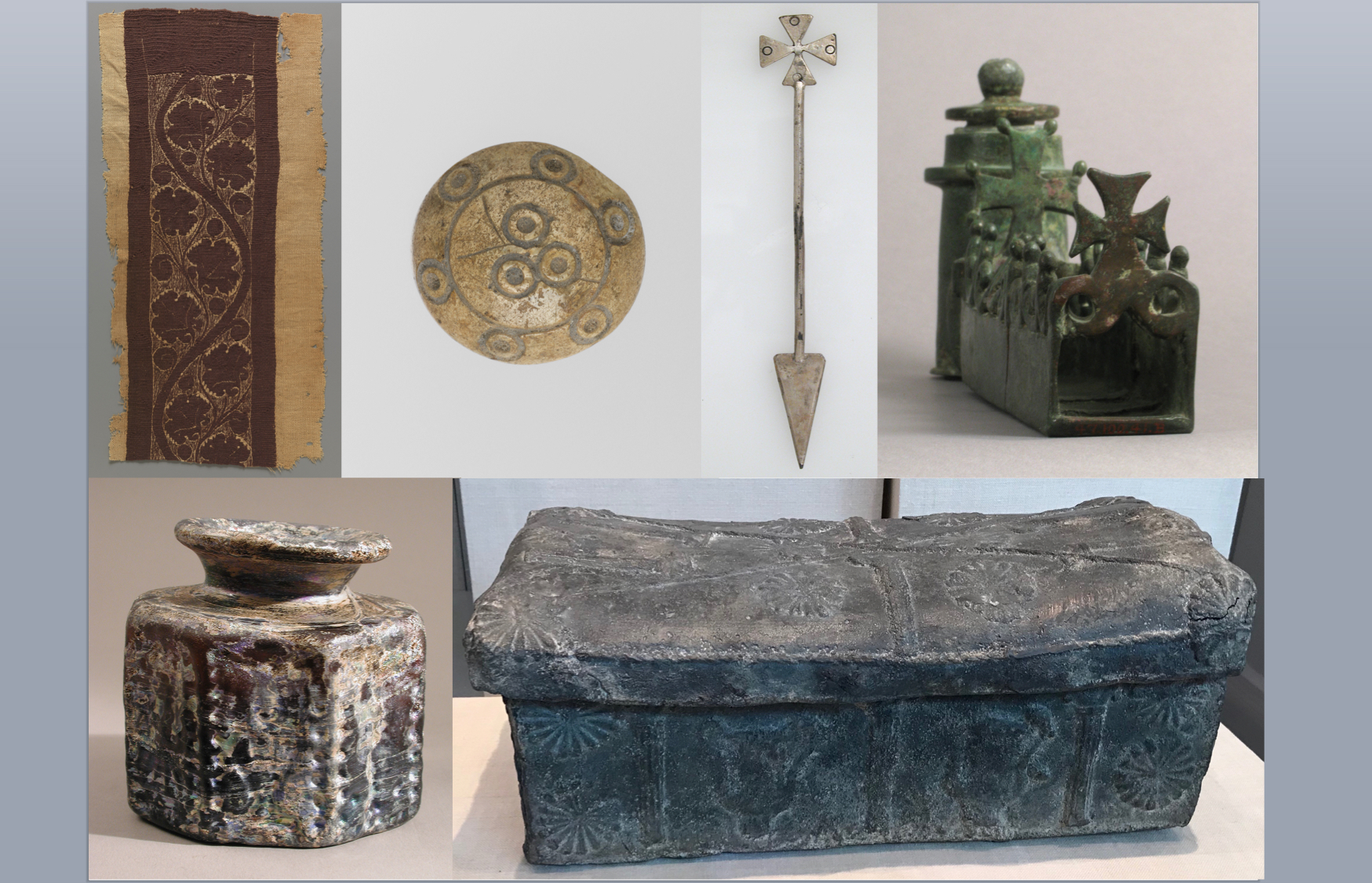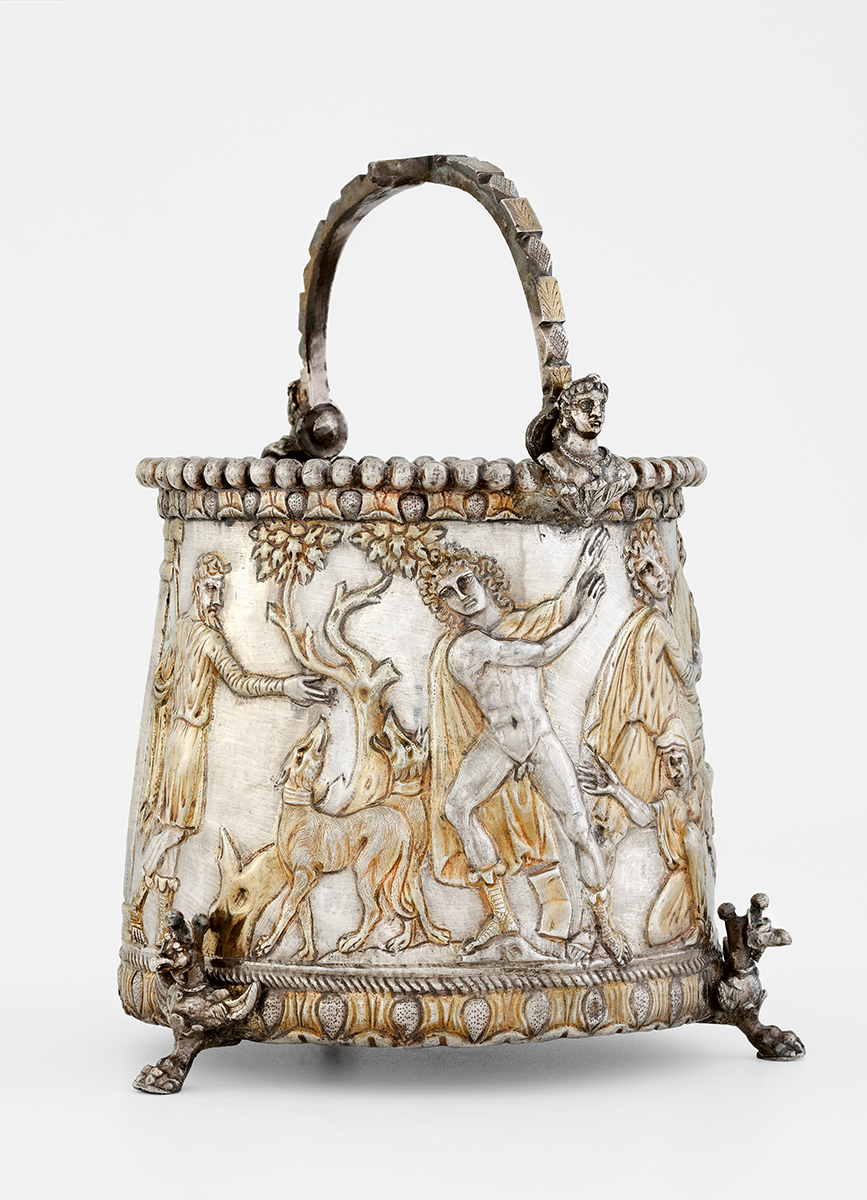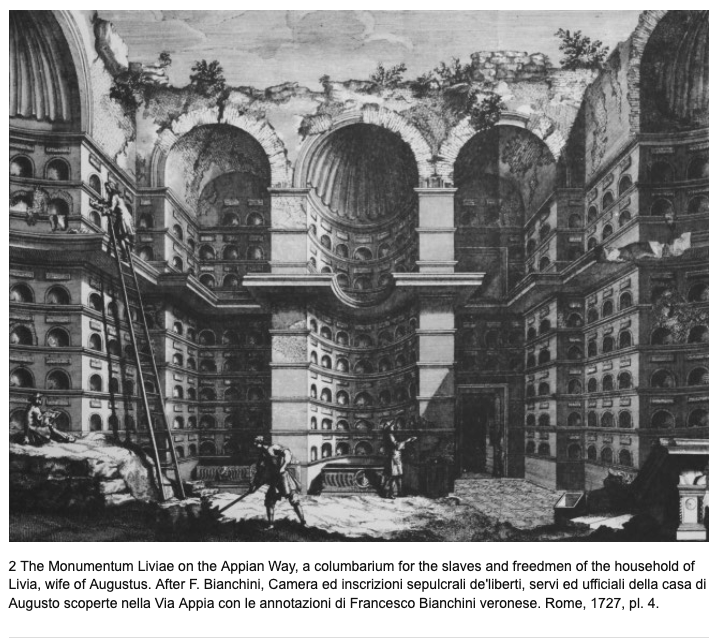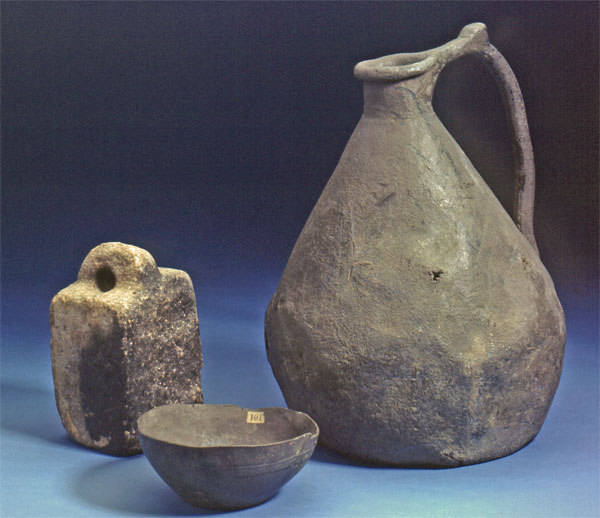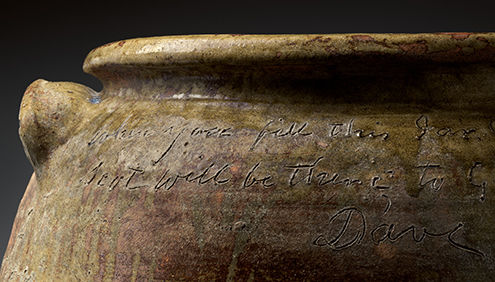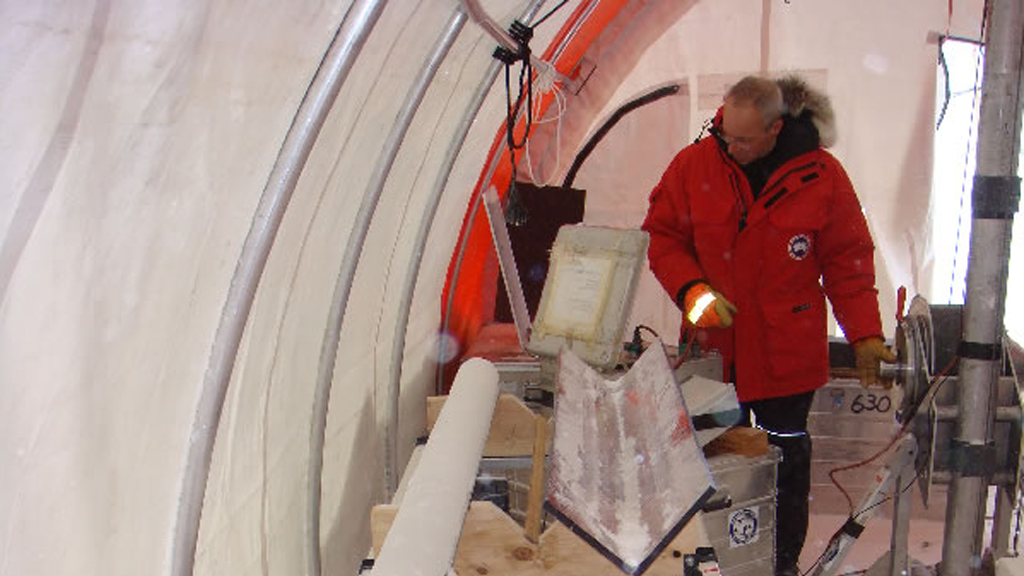This blog is currently paused. We hope to secure more research funding to continue the project and start writing again. For now, take a look at our substack.
Enslaved American Silversmiths?
The use of slaves in making has attracted careful attention from scholars of North American material culture, for example Catherine Bishir’s Crafting Lives (2013), and Glenn Adamson’s Craft: An American History (2021). We also have decades of fine scholarship on the use of enslaved West African ironworkers in colonial North America. The importance of enslaved blacksmiths is well established and reflected in major museum collections. The brutal lives and deaths of slaves at iron foundries and iron ore mines have been documented, including their exposure to heavy metal toxins. However, there is comparatively little written about workers of non-ferrous metals.[1]
In Bishir’s detailed study of New Bern, NC, the silversmiths were all free, including the literally named Freeman Woods. Adamson paints on a far broader canvas. He introduces us to Native American silversmiths, such as Slender Maker of Silver, and reminds us that “When we are faced with an 18th-century teapot or high chest in a museum, it is usually impossible to know whether or not it was made partly with enslaved labor.” Adamson is certainly referring to a silver teapot: He begins his book with a portrait of Paul Revere (Boston MFA 30.781), painted in 1768 holding in his left hand a silver teapot that he has crafted, not unlike Agatho. Like Agatho, too, Revere is shown with the tools of his trade, with which he is about to decorate and engrave the teapot.[2]
A coffeepot crafted by Revere just a year after Copley painted his portrait is in the Yale University Art Gallery (2016.158.1).[3] Paul Revere learnt his craft from his father, Apollos Rivoire (later Paul Revere Sr.), who had been an indentured servant as an apprentice to John Coney. The Reveres owned no slaves. This also appears to be the case with other silversmiths of the period, for example Richard van Dyck (1717-70) and Myers Myers (1723-95), who worked in New York City. The 1703 census is the only record that silversmiths in New York owned slaves. Three of thirteen silversmiths at that time each owned a single female slave, almost certainly a housekeeper. Otherwise, there is no evidence that any New York silversmith ever used slaves in their workshops.[4]
Many silversmiths owned slaves. For example, the probate inventory of Charleston silversmith Thomas You (d. 1786) lists seventeen slaves, but none is said to have been a smith.[5] I am aware only very few instances where it is explicitly stated that slaves were trained silversmiths or goldsmiths (the terms are used interchangeably). One is Abraham, who was owned and trained by the Charleston silversmith Alexander Petrie (d. 1768).[6] It is possible that further information may be found in the account book of Austen and Laurens, slave traders in Charleston, now at Yale.[7] Newport, a goldsmith from Newport, RI, owned and trained by Isaac Anthony, was reported as a runaway in 1749. Four years later, another Newport smith, advertised in a Boston newspaper that he wishes to sell an unnamed goldsmith, possibly the same Newport, but probably not.[8]
[1] K. W. Bruwelheide et al., “Restoring identity to people and place: Reanalysis of human skeletal remains from a cemetery at Catoctin Furnace, Maryland,” Historical Archaeology 54 (2020), 110-37.
[2] C. W. Bishir, Crafting Lives. African American artisans in North Bern, North Carolina (Chapel Hill, NC: UNC Press, 2013); G. Adamson, Craft: An American History (London and New York: Bloomsbury, 2021). For the portrait of Revere, by John Singleton Copley, see: https://collections.mfa.org/objects/32401
[3] Yale Art Gallery has many pieces of silver fashioned by Revere, including a silver teapot made in 1795 (1930-959).
[4] K. Hillen McKinsey, New York City Silversmiths and their Patrons, 1687-1750, Unpublished dissertation, University of Delaware 1984. We cannot be so certain that they did not have indentured servants – workers who were contracted to provide unpaid labor for a period of time, usually five to seven years, in payment of a debt – since this form of servitude was so very common among early immigrants. Debt bondage was usually related to the cost of their passage to North America.
[5] H. Nowell Brazier, “The most elegant and general assortment of plate:” The market for imported and locally-made sterling silver, consumer activism, and national identity in Charleston, 1760–1790, Unpublished dissertation, University of South Carolina, 2009, 31-2.
[6] B. S. Culp, “Mr. Petrie’s ‘Shop on the Bay’,” Antiques and Fine Art (2007), 250-5.
[7] Yale University, Beinecke Library: GEN MSS VOL 184 (folio)
[8] Yale University databases: https://slavery.yale.edu/links/subscription-databases
Making a Silver Pot
In our last post, we were introduced by St. Augustine to the practices of fourth- and fifth-century Roman silversmiths. Augustine compares argentarii to pagan gods, who are all great at one thing. He would have preferred a single perfect artisan, competent in all areas. Let us now consider the production of a single object, created by many artisans during Augustine’s lifetime (CE 350-430).[1]
The object we have chosen is a situla, literally a bucket, in this case a small pale, surely a finger pot for washing hands at the dinner table. It is around nine inches (23cm) high. We have chosen it because there has been an excellent recent analysis of it, and objects with which it was found. It is part of a large hoard of silver, the Seuso Treasure – mainly highly decorated plates, jugs, and dishes – now displayed at the Hungarian National Museum, Budapest. This analysis allows us to make the observations that follow.
There are, in fact, two situlae showing complementary scenes from the story of Hippolytus and Phaedra. The situla we have chosen, Hippolytus situla B, comprises several elements, all of which required expert smithing.
Let us posit the following process of production: Silver was melted down, either from ingots or, far more likely, existing objects and coins were recycled; two silver sheets was formed by pouring the molten silver into a mould; a smooth inner liner, and the outer shell of the piece were formed from these sheets of silver by a vascularius. The inner liner was set aside, and the outer shell was then given its exquisite chasing, the scenes of Hippolytus and Phaedra, by a caelator. A flaturarius formed the lower and upper framing bands, the base, and perhaps the beaded rim. However, the beaded rim may have been made elsewhere since, as we shall see, it has a somewhat different silver content. In any event, it was formed with a punch. A crustarius formed the three feet in the form of gryphons, the two decorative handle ornaments, which are busts of emperors, and probably also the lozenged handle. This was done using the lost wax casting technique. The various elements – inner liner, outer shell, handle, feet, etc. – were soldered together. An inaurator then added gilding, including the golden sheen on the figures’ clothes, hair, and other features of the landscape, the bands at the base and upper rim. Finally a tritor buffed it to a high sheen.[2]
Each of these silver-workers worked in an atelier that was, let us imagine – excavations suggest we would not be far not wrong – hot, full of fumes, and had poor ventilation. The melting of metals released various toxins into this workshop, while other escaped through chimneys, spreading across the broader city, its hinterland, and many miles beyond. Silver itself is relatively benign. Repeated exposure to silver particles causes the skin and body tissues to turn grey or blue-grey, a condition known as “argyria.” Ingesting high levels of silver may cause the heart to enlarge and stomach irritation, and breathing in silver particles causes throat and lung irritation. Copper was added to a great deal of Roman silver plate, to improve its mechanical properties. That is, adding copper makes the silver harder, more durable, and easier to work mechanically (i.e. with a hammer, rather than casting). Today we know the silver-copper alloy as sterling silver (typically 92.5% silver, 7.5% copper).
XRF analysis of the Seuso situla shows that the body, handle and feet all contains between 2% and 3% copper, compared to around 95% silver. However, the upper beaded rim, has much less copper, no more than 0.5%, with 99% silver. This tells us that molten copper was added to the silver after it was refined to ensure it was better able to withstand hammering, shaping and chasing. Exposure to copper fumes “causes upper respiratory tract irritation, metallic taste, nausea, and metal fume fever.”[3]
The same XRF analysis shows that each piece of the situla contains very small amounts of lead, between 0.2 and 0.5%. All Roman silver contains lead, usually between 0.5 and 1%. It took a little effort to refine silver to that standard, by a process known as cupellation. It took a great deal more to refine it still further. Evidently, the silver in this situla was refined again to produce very high quality silver before the right amount of copper was added. This may have been done using a process known as liquation, whereby silver is melted together with lead, forming a lead-silver alloy that separates from other metals, including copper. This alloy is then subjected to further cupellation. Roman silver production, including recycling, always involved a great deal of lead. Melting lead releases lead aerosols that are highly toxic.[4]
There was, however, something even worse than lead in the workshop, and its immediate vicinity: Mercury. The XRF analysis has identified mercury in the thin layer of gold applied by the gilder. This proves he used a method known as fire gilding, whereby liquid mercury is mixed with gold and then heated, releasing the mercury into the atmosphere and adhering the gold. Mercury is a powerful neurotoxin, ultimately deadly to the fire-gilder. It is “toxic to the central and peripheral nervous systems. The inhalation of mercury vapour can produce harmful effects on the nervous, digestive and immune systems, lungs and kidneys, and may be fatal.”[5] Like lead aerosols, mercury was carried away by the wind and deposited by rain, contaminating the soil and vegetation many miles from its source. A recent study of Roman age skeletons in Spain, over a 70-year period, consistently had more than twice as much mercury and lead as bones of those who lived in the same place afterwards.[6] There is no indication that these were metalworkers. Rather, abundant evidence makes it clear that Roman-age metallurgy had a massive deleterious effect on human health and the environment.[7]
[1] The choice of the Seuso situla was entirely due to the excellent new publication: V. Mozgai et al., “Non-destructive handheld XRF study of archaeological composite silver objects – the case study of the late Roman Seuso Treasure,” Archaeological and Anthropological Sciences 13:83 (2021), 20 pages.
[2] D. E. Strong, Greek and Roman Gold and Silver Plate (Ithaca, NY: Cornell University Press, 1966), 7, 14-16. On silver beaded rims see Richard Hobbs and Laura Perucchetti, “Beaded rims on silver plate vessels in late Roman Britain and beyond,” Britannia 53 (2022), 385-401.
For an instructive video on the creation of a Roman silver cup:
[3] CDC: https://www.cdc.gov/niosh/idlh/1317380.html
[4] Very generally, see Paul Stephenson, “Ancient Roman Pollution,” Lapham’s Quarterly, February 23, 2022.
[5] The approach to this sad fact to date is captured in a sentence by a scholar of silver-smithing: “[Fire-gilding] is a durable and economical use of gold, and the health hazards of mercury were not given the consideration that they are today.” See The Hoxne Late Roman Treasure: Gold Jewellery and Silver Plate, ed. Catherine Johns (London: British Museum Press, 2010), 186.
[6] O. López-Costas et al., “Human bones tell the story of atmospheric mercury and lead exposure at the edge of the Roman world,” Science of the Total Environment 710 (2020), 136319 (7 pages). Here bones from two adjacent cemeteries at A Lanzada in northwestern Spain showed that Romans (first to fifth centuries CE) absorbed twice as much lead and mercury as those who came later (fifth to seventh centuries). Isotopic analysis suggests that 70- 80% of this came from atmospheric lead pollution (and the remainder from local geogenic lead sources).
[7] J. Montgomery et al., ‘“Gleaming white and deadly”: using lead to track human exposure and geographic origins in the Roman period in Britain’, Journal of Roman Archaeology, supplementary series, 78 (2010), 199-226, at 209: “From the 1st c. A.D., some individuals exhibit enamel lead concentrations of up to 30 mg kg-1. These individuals have a level of lead that is 10,000 times higher than that of the least polluted individual in this study: the Early Bronze Age skeleton from Gristhorpe (Yorkshire) (3 μg kg-1; Table 11.3). According to the ratio above, an enamel lead concentration of 30 mg kg-1 would arise from a blood lead level of c.300 μg dL-1, which is far higher than the ~100 μg dL-1 associated with “very severe poisonings”. J. Moore et al., ‘Death Metal: Evidence for the impact of lead poisoning on childhood health within the Roman empire’, International Journal of Osteoarchaeology 31 (2021), 846-56: “This study includes 173 individuals (66 adults and 107 non-adults) from five sites, AD 1st–4th centuries, located throughout the Roman Empire. Results show a negative correlation between age-at-death and core tooth enamel lead concentrations.
This is the third and last of three posts that formed part of a short lunchtime lecture delivered at the Humanities Institute, Pennsylavania State University, in February 2023.
Roman Silversmiths
In our last post we met Agatho, a silversmith who lived at the time of Augustus. At exactly the time Agatho died (c. 25 CE), Livia, the widow of Augustus, maintained a columbarium, a burial chamber, used exclusively for interring her own slaves and freedmen and those of her immediate family who lived in or near Rome (and not at their vast estates elsewhere). This facility, today called the Monumentum Liviae, was run by some of her Rome-based slaves and freedmen. The dead included three freed and two enslaved goldsmiths (aurifices), a silversmith (argentarius), an enslaved gilder (inaurator) who belonged to one of Livia’s freed smiths, and a margaritarius, who set her pearls in gold or silver. All of these precious metal workers were men, but there is a record of the burial at contemporary imperial columbarium, the Monumentum Marcellae, of an enslaved female silver-worker who belonged to an unspecified Augusta, probably not Livia. Here there were three more silversmiths and another named as a chaser or engraver (caelator), a silversmith who raised designs on metalwork or carved designs into them. Agatho is portrayed with the tools of the chaser, and a cup with a raised figure.[1]
As we can understand from this partial list of jobs, the production of silver goods was broken down into many sub-specialisms of greater and lesser skill. We have not so far mentioned others, like vascularii, who shaped sheet metal into forms; flaturarii, who cast and attached basic elements, like handles and bases; crustarii, who cast and attached more decorative elements; and tritores, polishers. We even have an account by St. Augustine of how silversmiths worked, a metaphor for polytheistic religion, where many gods looked after specialist areas.
“We laugh indeed when we see pagan gods distributed by the whimsy of human opinion to tasks divided amongst them, just like … craftsmen in the quarter of the silversmiths, where one vessel passes through the hands of many artisans in order to come out perfect, even though it could have been completed by one perfect artisan. But it was thought necessary for a multitude of artisans to be consulted for no other reason than this, namely so that each artisan might learn one part of an art quickly and easily, and so that they would not all be compelled, slowly and with difficulty, to become perfect in a whole art.”[2]
Augustine does not tell us about enslaved silversmiths, but we can be sure that four centuries after Agatho’s death, many such artisans were enslaved or freed. We know a great deal about slavery in Augustine’s time from his own writings, including a letter discovered in the 1980s that details the mechanics of the later Roman slave trade, describing “an endless river” of people.
We might imagine that slaves of the imperial household were relatively well cared for in life, since some care and thought was afforded to them in death. However, we should not doubt that most enslaved artisans led hard lives, frequently undertaking dangerous tasks in poor working conditions. They worked with materials and undertook processes that damaged their eyes and teeth, skin, hands and wrists, joints and backs, lungs and organs. Repetitive tasks caused fractured bones, joint deterioration and arthritis. Anyone working with metals risked serious burns, respiratory damage, and the many consequences of heavy metal poisoning. We shall return to this in our next post, looking at a single object and the health consequences of its production.
[1] D. E. Strong, Greek and Roman Gold and Silver Plate (Ithaca, NY: Cornell University Press, 1966), 7, 14-16. Strong also comments on the Guilds of Silversmiths in Rome and other cities, and the fact that Nero is supposed to have created 150-200 new buildings for a silversmiths quarter. On the Monumentum Liviae, see Susan Treggiari, “Jobs in the household of Livia,” Papers of the British School at Rome 43 (1975), 48-77, at 54-5, 68, and note 91. See also J. M. C. Toynbee, “Some notes on artists in the Roman world, 5: Metal-workers, gem-engravers and medallists,” Latomus 9/iv (1950), 389-94, at 390, for Protogenes and Zeuxis, two freedmen employed as silversmiths in Augustus’ household. Toynbee comments on the fact that many such artisans, like Agatho, had Greek names.
[2] Augustine, De Civ. Dei 7.4; cited by Cameron Hawkins, Roman Artisans and the Urban Economy (Cambridge: Cambridge University Press, 2016), 66. Pace Augustine, it is likely that a silversmith worked his way through the skills, as a trainee chef might in a kitchen, before settling on his specialism.
This is the second of three posts that formed part of a short lunchtime lecture delivered at the Humanities Institute, Pennsylavania State University, in February 2023.
Agatho the Silversmith
In an earlier post we drew attention to the exhibition Hear Me Now! which has recently closed at the Met. There is no known Roman equivalent of David Drake, known as Dave. Although we know so little about him, still the details of Dave’s life can be contested. All we know for certain about Agatho the silversmith is what he had carved into his funeral portrait (c. 25 CE), which is now in the Getty Villa.[1] An inscription below his bust reads “Publius Curtilius Agatho, freedman of Publius, silversmith,” reminding us that Agatho lived and died with his former master’s name preceding his own, but also that he was proud of his trade. Agatho is shown holding a smith’s mallet and chisel, and also a small silver cup, presumably one he made himself. We can just make up a raised design of a figure, which may be a dancing satyr, not unlike the design on a silver wine cup, the Vicarello Goblet, made at exactly this time and now displayed in the Cleveland Museum of Art.[2]
The number of Roman slaves who could be granted freedom – manumitted – in any year was restricted in Agatho’s lifetime. After 4 CE (Lex Aelia Sentia), according to the wish of the emperor Augustus (d. 14 CE), the master must be at least twenty, and the slave at least thirty years old, at the time of manumission. By the age of thirty, we might guess that Agatho had been a silversmith for two decades. We can also guess that part of the price of his freedom was a legally-binding commitment to providing Publius Curtilius with a proportion of his skilled labor for free for the rest of his life (operae libertorum); by “his life,” I mean Agatho’s life, for the gift of free labor might be inherited by Publius’ heir if that was specified in the contract that Agatho signed. In other words, skilled freedmen like Agatho might be offered the opportunity to purchase their freedom for credit rather than cash; and although legally they were freedmen, only death would free them of their debt of work.
Agatho would have owed only part of his time to Publius. If Agatho earned enough money from other work, then he may have been able to delegate his operae libertorum to a silversmith of equal skill, perhaps one he trained himself, whom he paid. That skilled worker could not have been another of Publius Curtilius’s slaves, of course. This may have included Agatho’s own children, if they were before Agatho’s manumission. Any child Agatho fathered after his manumission would be freeborn, although not without some restrictions to what he might achieve as a citizen. Finally, if Agatho made enough money, as a freedman he would be permitted to own his own and train his own slaves. There are 197 references in Justinian’s Digest of Roman law concerning operae libertorum that address these various scenarios.[3]
[1] Grave Relief of a Silversmith, Getty Villa: https://www.getty.edu/art/collection/object/104034
[2] John D. Cooney. “The Vicarello Goblet”, The Bulletin of the Cleveland Museum of Art 54/ii (1967), 36-41, which notes traces the history of the goblet since its discovery in 1862 and notes that basic analysis of the silver was undertaken in 1966/7.
[3] Cameron Hawkins, Roman Artisans and the Urban Economy (Cambridge: Cambridge University Press, 2016), 130-91.
This is the first of three posts that formed part of a short lunchtime lecture delivered at the Humanities Institute, Pennsylavania State University, in February 2023.
Romans as Geomorphic Agents
Devastating Beauty explores the impact that the expansion of Roman power had on the natural world and human health through a millennium. By most measures, the greatest impact is to be seen as Rome’s empire reached its fullest extent, between c. 100 BCE and CE 100. By the end of that period, the city of Rome had existed for eight centuries. The growth of the city had a profound effect on landscape. Among the most obvious and striking changes was the reduction or disappearance of several of Rome’s seven hills, so that today only the Capitoline and Palatine stand out as isolated, squared-off hills.
The city of Rome is located in the valley of the Tiber River, the longest and most important river in central Italy. The Tiber Valley has been occupied continuously for at least 5,000 years, and the earliest settlement may have been 14,000 years ago. The site of Rome itself, in the region known as Latium, was spread across seven hills overlooking the Tiber, around 19 miles (30km) inland from where the river reaches the Tyrrhenian Sea, was settled in the middle of the second millennium BC, although it was not then a city.[1]
A thousand years later, a significant city existed (up to 500 acres), with a wall surrounding that served as a basic defence and marked its boundary. Outside the wall were several large cemeteries. The construction of the city required large-scale changes to the landscape, which was prone to flooding. Archaeologists have identified quarrying, reclamation of land, and the construction of terraces to accommodate building work. A portion of the valley that was drained between the Palatine and Capitoline hills became the Forum Romanum, the Roman Forum, the heart of the ancient city. On top of the Capitoline, a temple was built to Jupiter Feretrius, Rome’s first patron god. Votive offerings, gifts for the god have been found there that date to around 750 BCE, appearing to support Varro’s preferred date for the city’s foundation, 753 BCE (or that of Dionysius of Halicarnassus, 751 BCE). Just to the east, a small plain beside the river, surrounded by three hills, accommodated a port and market. It became known as the Forum Boarium, named for the cattle traded there.[2]
The natural landscape of the river valley and its tendency to flood are integral to the city of Rome’s foundation myths, as collected and retold in prose and poetry by Virgil, Livy, and Dionysius, all writing in the first century BCE. None of these writers, of course, was truly aware of the astounding alterations the landscape of the city had undergone from its foundation to the time they wrote.
The seven hills of Rome would have been obvious in the eighth century BCE, but far less so by 100 CE. Deep valleys carved by the Tiber through the region’s pyroclastic rock were partially or completely filled in by human activity. Other valleys were deepend by the quarrying of that rock for construction. There was a very great deal of planned destruction and accompanying construction, which accelerated even after 100 CE. The Velia, a ridge that ran between the Esquiline and Palatine hills, was progressively reduced between the first and fourth centuries CE. The job was finished in the twentieth century. Perhaps the greatest movement of materials took place with the construction of the Aurelian walls in the later third century.[3]
Almost as significant as the planned movement of materials was the incidental accumulation over time of ‘anthropogenic deposits’. These are up to 20 metres deep in valleys (and 23.5 metres where Rome’s Termini railway station now sits). Ancient deposits this deep are found only within the Aurelian walls, with deposits only 2-5 metres outside. However, it is outside the walls that modern deposits, mainly since set down 1873, can be up to 16 metres deep in fluvial valleys. These figures are strikingly greater than in other historical cities. For example, in Pisa and Padua the maximum thickness of anthropogenic deposits is 6-7 metres, and in London (beside the river Thames) ‘anthrostrata’ are rarely more than 3 metres deep.[4]
Clearly, in the construction of the city of Rome, humans became geomorphic agents on a scale hardly matched in history.[5]
[1] Andrea L. Brock, ‘Floodplain occupation and landscape modification in early Rome’, Quaternary International 460 (2017), 167-74.
[2] Mary T. Boatwright, Daniel J. Gargola, and Richard J. A. Talbert, Rome: From Village to Empire (Oxford and New York: Oxford University Press, 2012), 32-7; Kathryn Lomas, The Rise of Rome: From the Iron Age to the Punic Wars (London: Profile, 2017), 35-53.
[3] Francesca Vergari et al., ‘Geomorphology of the historic centre of the Urbs (Rome, Italy)’, Journal of Maps 17/iv (2021), 6-17.
[4] Gian Marco Lubertio et al., ‘Estimation of thickness of anthropogenic deposits in historical urban centres: An interdisciplinary methodology applied to Rome’, The Holocene 29/i (2019), 158-72.
[5] R. LeB. Hooke, ‘On the history of humans as geomorphic agents’, Geology 28/ix (2000), 843-6. Cf. Nawa Sugiyama et al., ‘Humans as geomorphic agents: Lidar detection of the past, present and future of the Teotihuacan Valley, Mexico’, Plos One September 20, 20201, 21 pages: https://doi.org/10.1371/journal.pone.0257550
Pewter in Late Roman Britain
Pewter in Late Roman Britain
Tin was less abundant and more expensive than lead in late Roman Britain, but it was still mined and widely available. Objects manufactured in tin-lead alloys, called pewter in English, were increasingly common. Of the more than 400 pewter vessels known from Roman Britain, most have been dated to the fourth century. Moreover, the high tin alloys are dated earliest, with increasingly leaded alloys predominating in the late third and fourth centuries. A higher proportion of lead than tin made pewter vessels both more durable and less expensive, but also to most purchasers less desirable. Pewter ingots were made and circulated. However, there is clear evidence for conscious choices made by pewter smiths, with different alloys employed in the casting of parts of vessels, for example the base of a dish having a higher lead content, whether for hardness and support or because the upper part with higher tin content would be more apparent to a viewer. The distribution of pewter finds suggests an active industry in the east of England, near Cambridge, where there are no tin or lead mines, but also activity in and near Bath, the Mendips, and further southwest, where there are both.[i]
The increased number of metal objects, including those in lead and pewter, may indicate increasing wealth in Roman Britain in the fourth century, and perhaps even a wealthier middling sort, beneath those who built ever more and larger villas in that century, frequently with beautiful mosaics. However, it is most clearly an indication of the abundance of lead available, whether from new smelting or the recycling of existing materials. This lead, and pewter, made its way to northwestern Europe, where it has been identified in numerous contexts from the fourth century until the tenth, including pewter mounts from the Viking ship burial at Gokstad (dated CE 895-903).[ii]
[i] N. Beagrie, ‘The Romano-British pewter industry’, Britannia 20 (1989), 169-91; R. Poulton and E. Scott, ‘The hoarding, deposition and use of pewter in Roman Britain’, Theoretical Roman Archaeology Conference 4 (1993), 115-32; J. Hall, ‘Public, personal or private? Roman lead-alloy ingots from Battersea’, in ‘Hidden histories and records of antiquity’: Essays on Saxon and Medieval London for John Clark (London, 2014), 116-21; Bayley, ‘Roman non-ferrous metalworking’, 332, 334, 336-7. A new study is promised based on the British Museum collection: L. Smith, Pewter in Roman Britain (London, forthcoming).
[ii] U. Pedersen et al., ‘Lead isotope analysis of pewter mounts from the Viking ship burial at Gokstad: On the origin and use of raw materials’, Archaeometry 58, suppl. 1 (2016), 148-63. For Roman-period finds in France, Belgium, and the Netherlands, see Beagrie, ‘Romano-British pewter’, 179-81.
A Beautiful Lawn
The end of summer brings to a close a period of noise pollution and increased greenhouse gas emissions over verdant suburbs across Europe and the USA. The shift to electrification in lawn care has been slower even than that in other forms of motorized transport. “Gasoline-powered lawn mowers and garden equipment are emitting 30 million tons of pollutants yearly in the USA, accounting for a quarter of all non-road gasoline emissions.” An aging lawn tractor or riding mower running on gasoline will emit as much in an hour of grass cutting as a newer hybrid SUV driven 500 miles. Most homeowners will cut their grass every week for four months of the year, or pay a company to do this. Landscaping is a $130 billion industry in the USA, and lawn care accounts for most of its revenue.
Pliny the Younger is, we think, the first person to record the pride he took in his lawn. Perhaps I should say, his letter on that subject is the earliest to survive. But Pliny’s lawn was one element, and a rather modest one, in a much larger design at his Tuscan Villa. It was not the vast, manicured expanse that became central to French and English formal gardens of the seventeenth century, the maintenance of which required an army of gardeners and herds of sheep and goats. Of course, Pliny’s many estates, including that in Tuscis, were maintained by his slaves.
The Romans of all ages used water to spectacular effect, bringing resources through thousands of miles of aqueducts to deliver them to cities, where the urban poor were afforded fresh potable water from great public fountains. The rich could hope for better, diverting resources to their own homes through official sanctioned pipes. Eleven aqueducts serviced the city of Rome, the greatest of which, the Anio Novus aqueduct, delivered around 11 billion gallons of water each year. Today, in the USA alone, the EPA estimates that 9 billion gallons a day, are used outdoors, and in hot months that more than doubles in order to irrigate lawns. Perhaps half of that is wasted due to evaporation and run-off.
The desire for a beautiful lawn drives many otherwise environmentally-conscious individuals to unhappy compromises, paying lawn ‘experts’ far too much to privilege non-native species, to spray chemicals, and to mow far too frequently. Weekly mowing destroys biodiversity, greatly diminishing the numbers of pollinators, including bees. Far greater diversity of plants and insect life is supported by grass that is mowed at most three times each year. Moreover, “Manicured lawns tend to disproportionately favor ‘pest’ species.“
The news is not all bad. The rapid expansion of lawns, for all their limitations, may still have been net positive over the past two decades. Carbon sequestration by lawn turf may be poor, but it is better than bare soil; and when there is so much more of it, it has great potential to do far more. Moroever, decades of research into the use of grass to manufacture biofuels appears to be close to implementation. This, however, requires scale and specialized facilities.
Unfortunately, individual efforts to do more by mowing less frequently run up against social and municipal constraints. Those who allow their lawns to grow longer, indulging in low mow or even no mow activity, often encounter unhappy neighbors who draw their attention to local ordinances on appropriate maximum grass length, impact on local property prices of an ‘overgrown’ garden, and the unhappy presence of bugs, ticks, and vermin in the weeds and fronds (aka biodiversity). Those who sustain the lawn industry and pollute your neighborhood for months have the support of local government to ensure that you do the same.
Slave Makers
Hear Me Now, an exhibition at the Metropolitan Museum of Art, opened this month. A wonderful video allows us to hear the thoughts and reflections of the curators. More importantly, through the art they have curated we are able to hear the voices of the makers, enslaved potters of great skill, put to work at Edgefield in South Carolina. As slaveholders and their enablers tightened laws aimed at restricting literacy, these makers spoke eloquently in local clay, the same kaolin (porcelain clay) that they and their families had worked, or still worked, in West Africa. More than this, they wrote on the pots they threw. Dave, a potter of immense talent, also wrote poetry.
In highlighting the reliance on highly skilled slaves in artisan production, the exhibition reminds us that the antebellum South was far from unique. Slavery has been ubiquitous in human history and we have no way of knowing, in almost every case, whether a work of pre-modern art was produced by an enslaved person.
It was certainly the case in the Roman world that skilled slaves made almost everything, frequently alongside those who had been freed and those who were born free.[i] Private slaves and freedmen were also employed in countless artisanal contexts.[ii]
Enslaved artisans led hard lives, but typically did so in far better conditions than those endured by industrial and agricultural slaves. I highlight here metal communities, since they extracted and smelted the ores to produce metals worked in countless smithies and workshops by artisans. Miners and smelters were frequently imperial slaves, perhaps criminals or prisoners-of-war condemned to their profession, but also those who happened simply to born to miners, and therefore were bound to the mines. A section of the Theodosian Code (CTh.), a compilation of laws produced in the 430s, entitled De metallis et metallariis, addresses the regulation of mines and miners, metals and metal-workers, and stone quarries. A law of 424 (CTh. 10.19.15) ruled that “if any person should be born from a miner and from any other stock, he shall necessarily follow the ignoble birth status of a miner”. Moreover, if miners should “seek to migrate to foreign parts, they shall be recalled to the family stock and the household of their birth status”. There was by then an established body of law relating to the flight of indentured miners, starting with a ruling of 30 April 369, which instructed provincial judges to provide support in identifying and apprehending vagrants (CTh. 10.9.5).[iii]
[i] The vast bibliography can be entered via N. Lenski, ‘Violence and the Roman slave’, in The topography of violence in the Greco-Roman world, eds. W. Riess and G. Fagan (Ann Arbor, 2016), 275-98.
[ii] A related law, issued just a month or two later, suggests miners had absconded to Sardinia by ship, and that ships’ captains were liable for a fine of five solidi for each miner they helped to escaped. Evidently, the practice continued, and a further law of 378 returned to the matter of miners absconding to Sardinia, notably gold miners. There were certainly fewer slaves working the mines than in earlier centuries.
[iii] C. Hawkins, Roman artisans and the urban economy (Cambridge, 2016), passim, especially 84-5, 87, 89, 91-2, 97, 126-8, 130-91.
Ice cores
Just a note on something icy on a hot summer day. As we wrote in New Rome, in a section excerpted in Lapham’s Quarterly, Roman age smelting of silver-lead ore has left signals across the North Atlantic world in the form of anthropogenic heavy metal contamination of soil, sediment, and ice. Cores extracted from glaciers in Greenland and the Arctic show a sudden and dramatic rise in the deposition of atmospheric lead pollutants between c. 100 BCE and CE 100.
Lead is released by the smelting of a range of metallic ores, including those mined for copper and gold, tin, zinc, and silver, and from lead itself. In each location the levels of lead pollutants fall away rapidly toward 400, only beginning to rise again after 800, and not reaching Roman levels until c. 1700. In none of these locations is there any evidence for contemporary mining and smelting of metallic ores, which would have produced the contamination.
Roman-age pollution in the North Atlantic world is the direct result of fluctuations in the intensity of smelting that took place thousands of kilometers to the south, releasing into the atmosphere lead aerosol particles that were conveyed great distances within the northern hemisphere’s atmospheric transport system and deposited by precipitation. The origin of the lead in Greenlandic ice has been confirmed by geochemistry (isotope analysis). Spain was the source of up to 70 percent of the heavy metal pollution at its peak in the first century. Contamination is far greater the closer one gets to its source. In an ice core taken from the Col du Dôme glacier in the French Alps, the magnitude of lead contamination is one hundred times greater than that recorded in Greenland in the first century BCE, reaching a lower peak in c. 100, before falling steadily and dramatically to its lowest point in the sixth century.
In contrast, there are no spikes in lead pollution evident in any of ice cores extracted in Antarctica before around 1890. There is a steady, gradual increase in lead concentrations, reflecting the emergence of metallurgy in the southern hemisphere after CE 1500. Concentrations of lead triple from ~0.6pg g-1 in CE 1650 to ~1.8pg g-1 in CE 1885, then triple again to ~5.4pg g-1 before 1900. The isotopic signature of the lead relates it directly to the commencement of silver-lead mining at Broken Hills, and smelting at Port Pirie, in southern Australia.
According to a team of scientists, principally from the Desert Research Institute:
Concentrations remained high until the late 1920s, with a temporary low during the Great Depression (~1932) and again at the end of WWII (~1948) when concentrations dropped back to mid-19th century levels. Concentrations increased rapidly to 5.7 pg g−1 by 1975 and remained elevated until the mid-1990s. Concentrations during the early 21st century were ~3.7 pg g−1 lower than the peak 20th century concentrations but well above background levels before the start of the Industrial Revolution.(1)
This study draws on sixteen separate cores “from widely spaced coastal and interior sites”. It confirms and expands earlier, similar findings from a study of only the Law Dome glacier.(2)
The contrast between northern and southern hemisphere lead pollution highlights the scale and impact of Roman age smelting.
Notes
(1) J. McConnell et al., ‘Antarctic-wide array of high-resolution ice core records reveal pervasive lead pollution began in 1889 AD persists today’, Scientific Reports 07/2014: 4: 5848, 5 pages.
(2) P. Vellelonga et al., ‘The lead pollution history of Law Dome, Antarctica, from isotopic measurements on ice cores, 1500 AD to 1989 AD’, Earth and Planetary Science Letters 11 (2002), 291-306
